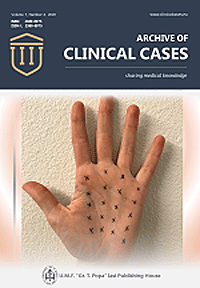Leiomyoma (uterus)
Uterine leiomyoma is a hormone-dependent benign connective tissue tumor of the smooth muscle cells of the myometrium. It is the most frequent uterine tumor.

Figure 1
Gross examination : The tumor can be single or multiple (leiomyomatosis) (Figure 1), variable in size. It can reach large sizes (over 10 cm.) causing pain, meno-metrorrhagia / abnormal bleeding, urinary dysfunction and infertility.
In this case, the uterine body / corpus is enlarged and deformed. The cut surface shows multiple nodules, well-circumscribed, firm, white-greyish with a whorled appearance formed by the intersecting bundles of brown muscle fibers and white fibrous tissue. Leiomyomas can also present bleeding areas, cystic degeneration and calcifications. The uterine cavity is compressed.

Figure 2
The tumors can occur intamural, submucous and / or subserous (Figure 2). Most leiomyomas are intramural, occupying the middle portion of the myometrium.

Figure 3
Another topographic classification divides leiomyomas into : cervical (Figure 3), isthmic and of the uterine body (which is the most frequent - 96 %).

Microscopy : Tumor cells resemble normal cells (uniform, elongated, spindle-shaped, with a cigar-shaped nucleus) and form bundles with different directions (whirled). The tumor may present areas of fibrosis, calcification and / or hemorrhage. The tumor is well circumscribed, but not encapsulated. (Hematoxylin-eosin, ob. x10)

